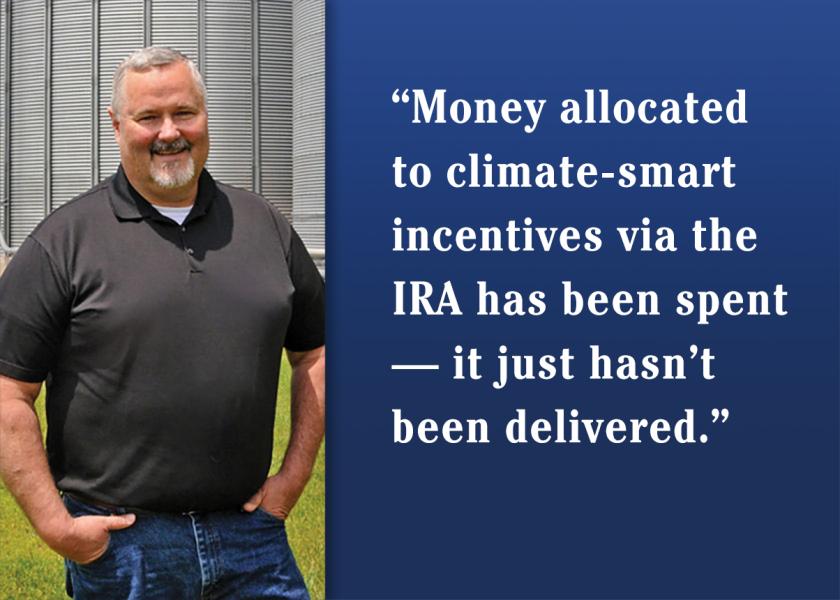Chip Flory: Think Outside the Box to Build a Better Price

Periods of low-priced markets often demand creative marketing to build a price higher than the cost of production. Re-ownership of cash sales in futures or call options is the most common tactic used to build a price, and some are comfortable using option spreads to add on to a cash selling price. Some of these strategies, however, belong in a speculative trading account rather than your hedge account.
There was a time where providing a unique product for a niche market was a popular way to add value to production. Now sustainable, regenerative and smart-farming practices offer an opportunity to build a price during what looks to be another low-priced period in the grain markets. For example, the Biden administration’s Inflation Reduction Act (IRA) had less to do with reducing inflation and more to do with incentivizing green energy production and emission reductions.
“The President’s IRA of 2022 makes the single largest investment in climate and energy in American history,” says the U.S. Department of Energy.
Money allocated to climate-smart incentives via the IRA has been spent; it just hasn’t been delivered. And it will be delivered. Manufacturers of solar panels, energy innovators and farmers are on the list of likely recipients.
One of those efforts is the Section 45Z Clean Fuel Production Credit. This tax credit is designed to incentivize production of clean transportation fuels. At present, the focus is on ethanol-to-jet. Giving corn-based ethanol a pathway into sustainable aviation fuel (SAF) production has incentivized projects such as a massive, and controversial, CO2 pipeline and paying corn producers for using low-carbon production practices.
Establish a carbon intensity score
That’s where your carbon intensity (CI) score comes into play. The earliest carbon sequestration efforts focused on changing production practices to lock up carbon. These programs failed to reward producers already using the practices they were attempting to encourage.
Section 45Z credits might be available to producers with a history of climate-smart production methods such as cover crops, no-till and some precision ag practices. Established farming practices are evaluated in calculating a CI score, and ethanol plants should be willing to pay more for corn produced with a low CI score in order to participate in the high-value SAF market.
It’s a three-year tax credit available through the 2027 crop year, but establishing your CI score starts with the 2024 crop. It’s about documenting production practices. It’s about working with other producers to feed corn into an ethanol plant that has a low enough CI score to make the ethanol produced at the plant eligible for SAF credits. It’s about documenting what you already do to potentially build a better price during what looks to be another period of low crop prices.







